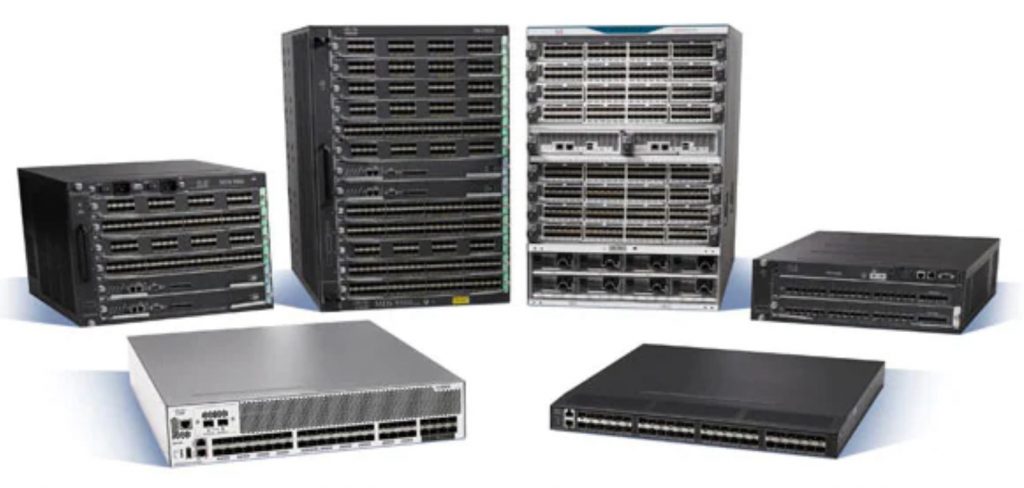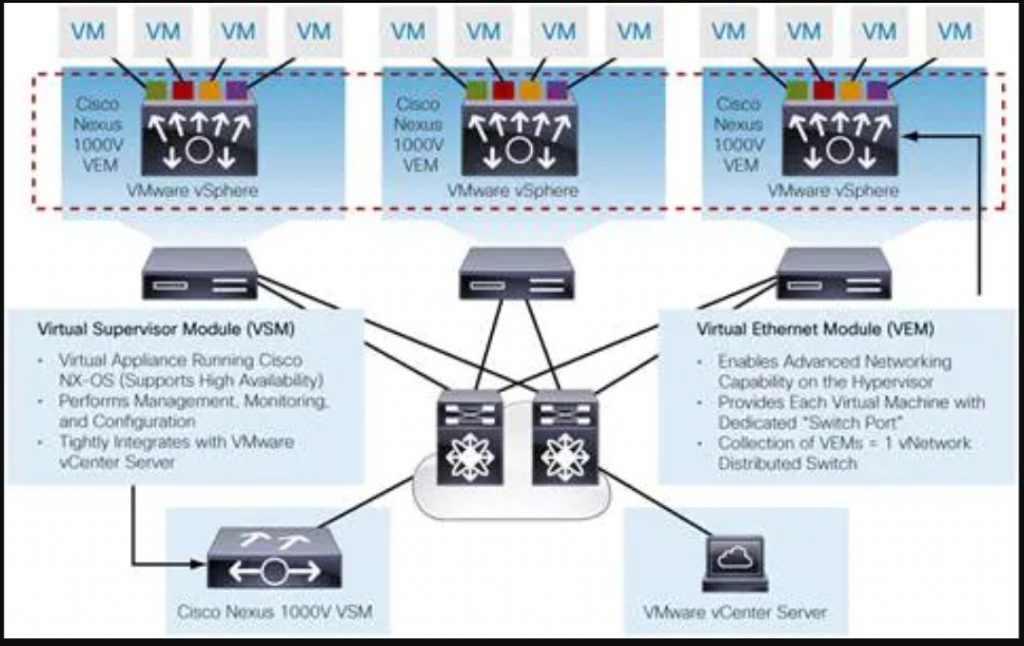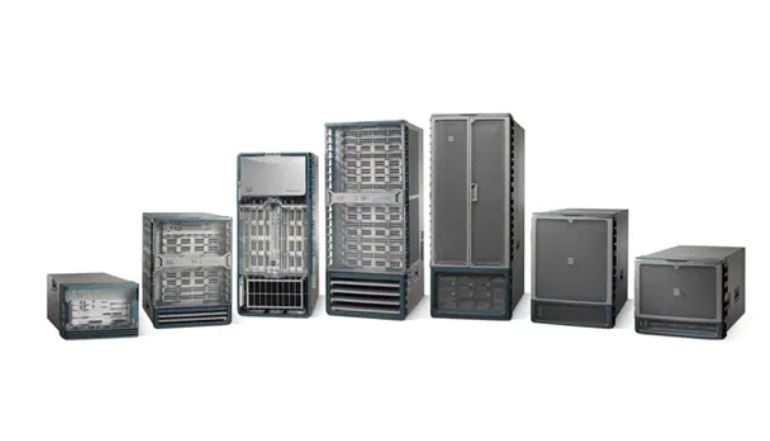Cisco Switch Licence
Cisco Switch License
A network switch (also called switching hub, bridging hub, and by the IEEE MAC bridge) is networking hardware that connects devices on a computer network by using packet switching to receive and forward data to the destination device.
Switches for Ethernet are the most common form of network switch. The first Ethernet switch was introduced by Kalpana in 1990.Switches also exist for other types of networks including Fibre Channel, Asynchronous Transfer Mode, and InfiniBand.
A network switch is a multiport network bridge that uses MAC addresses to forward data at the data link layer (layer 2) of the OSI model. Some switches can also forward data at the network layer (layer 3) by additionally incorporating routing functionality. Such switches are commonly known as layer-3 switches or multilayer switches.
Switches for Ethernet are the most common form of network switch. The first Ethernet switch was introduced by Kalpana in 1990.Switches also exist for other types of networks including Fibre Channel, Asynchronous Transfer Mode, and InfiniBand.
Unlike less advanced repeater hubs, which broadcast the same data out of each of its ports and let the devices decide what data they need, a network switch forwards data only to the devices that need to receive it.
A Cisco Switch License is a device in a computer network that connects other devices together. Multiple data cables are plugged into a switch to enable communication between different networked devices. Switches manage the flow of data across a network by transmitting a received network packet only to the one or more devices for which the packet is intended. Each networked device connected to a switch can be identified by its network address, allowing the switch to direct the flow of traffic maximizing the security and efficiency of the network.
A switch is more intelligent than an Ethernet hub, which simply retransmits packets out of every port of the hub except the port on which the packet was received, unable to distinguish different recipients, and achieving an overall lower network efficiency.
An Ethernet switch operates at the data link layer (layer 2) of the OSI model to create a separate collision domain for each switch port. Each device connected to a switch port can transfer data to any of the other ports at any time and the transmissions will not interfere.[a] Because broadcasts are still being forwarded to all connected devices by the switch, the newly formed network segment continues to be a broadcast domain. Switches may also operate at higher layers of the OSI model, including the network layer and above. A device that also operates at these higher layers is known as a multilayer switch.
Segmentation involves the use of a switch to split a larger collision domain into smaller ones in order to reduce collision probability and to improve overall network throughput. In the extreme case (i.e. micro-segmentation), each device is located on a dedicated switch port. In contrast to an Ethernet hub, there is a separate collision domain on each of the switch ports. This allows computers to have dedicated bandwidth on point-to-point connections to the network and also to run in full-duplex mode. Full-duplex mode has only one transmitter and one receiver per collision domain, making collisions impossible.
The network switch plays an integral role in most modern Ethernet local area networks (LANs). Mid-to-large sized LANs contain a number of linked managed switches. Small office/home office (SOHO) applications typically use a single switch, or an all-purpose device such as a residential gateway to access small office/home broadband services such as DSL or cable Internet. In most of these cases, the end-user device contains a router and components that interface to the particular physical broadband technology. User devices may also include a telephone interface for Voice over IP (VoIP).
Role in a network
Switches are most commonly used as the network connection point for hosts at the edge of a network. In the hierarchical internetworking model and similar network architectures, switches are also used deeper in the network to provide connections between the switches at the edge.
In switches intended for commercial use, built-in or modular interfaces make it possible to connect different types of networks, including Ethernet, Fibre Channel, RapidIO, ATM, ITU-T G.hn and 802.11. This connectivity can be at any of the layers mentioned. While the layer-2 functionality is adequate for bandwidth-shifting within one technology, interconnecting technologies such as Ethernet and token ring is performed more easily at layer 3 or via routing.[6] Devices that interconnect at the layer 3 are traditionally called routers.
Cisco Switch License
Where there is a need for a great deal of analysis of network performance and security, switches may be connected between WAN routers as places for analytic modules. Some vendors provide firewall,[8][9] network intrusion detection, and performance analysis modules that can plug into switch ports. Some of these functions may be on combined modules.
Through port mirroring, a switch can create a mirror image of data that can go to an external device such as intrusion detection systems and packet sniffers.
A modern switch may implement power over Ethernet (PoE), which avoids the need for attached devices, such as a VoIP phone or wireless access point, to have a separate power supply. Since switches can have redundant power circuits connected to uninterruptible power supplies, the connected device can continue operating even when regular office power fails.
Features and benefits
Broad deployment options
Get a choice of traditional, cloud-managed, or full fabric-control mode–as well as a range of features, scales, port speeds, and interface types from 1G to 100G
Intent-based networking design
Cisco’s fixed and modular, core, distribution, and LAN access switches have been designed for the era of intent-based networking.
Secure and intelligent
Our switches are powered by intent and informed by context, with security embedded throughout. They help your network continuously learn and evolve to meet business needs.
Open and programmable
Seamlessly integrate with full-stack programmability, from ASIC to the OS, helping you to add future features without upgrading hardware.
Types of Switches
Modular switches
Modular switches let you add expansion modules as needed, giving you flexibility as network requirements change. Expansion modules are application-specific and include those for firewalls, wireless connectivity, or network analysis. They may also allow for additional interfaces, power supplies, or cooling fans. This type of switch provides you with the most flexibility, but at a higher cost.
Fixed-configuration switches
Fixed-configuration switches provide a fixed number of ports and are typically not expandable, which makes them less expensive overall. Fixed-configuration switches include unmanaged switches, smart switches, and managed switches.
Unmanaged switches
Unmanaged switches are typically used to provide basic connectivity. They’re designed to be plug and play; no configuration is needed. Unmanaged switches are most effective when only basic switching and connectivity are required. You will often see them in home networks or wherever only a few ports are needed, such as at a desk, in a lab, or in a conference room.
Some unmanaged switches do offer limited advanced capabilities, however—as the name implies—these switches generally cannot be modified or managed.
Smart switches
Smart switches offer some management and segmentation, quality of service, and security capabilities, so they can be a cost-effective alternative to modular switches. Still, they are not as scalable as managed switches. These switches are typically deployed at the edge of a large network (while managed switches are used in the core), as the infrastructure for smaller networks, or for low complexity networks.
Managed switches
Among fixed-configuration switches, managed switches are designed to deliver the most comprehensive set of features to provide the best application experience, the highest levels of security, the most precise control and management of the network, and the greatest scalability. As a result, managed switches are usually deployed as aggregation/access switches in very large networks or as core switches in smaller networks.
Managed switches are the most expensive option of fixed-configuration switches and are most common in organizations with large- or growing- networks.
Four switch options
1.Switch speeds
Switches are available in different throughputs or speeds, the rate they transmit data in megabits per second (Mbps). For example, fixed-configuration switches can provide Fast Ethernet (10/100 Mbps), Gigabit Ethernet (10/100/1000 Mbps), Ten Gigabit (10/100/1000/10000 Mbps), and even 40/100 Gbps (gigabits per second) speeds. The switch speed you choose depends on the type of throughput you need. If, for example, you need to move large data files on a regular basis, you should consider a Gigabit Ethernet switch.
2.Number of ports
As is the case with switch speed, the number of ports available in a switch can vary. The bigger your small business and the more network users you have, the more ports you’ll need. Fixed-configuration switches are usually available with five, eight, 10, 16, 24, 28, 48, or 52 ports.
3.Power over Ethernet (PoE) vs. non-PoE
PoE lets you power a device—such as an IP phone, surveillance camera, or wireless access point—over the cable that is used for data traffic. This allows you to place endpoints anywhere, even in those areas that are usually difficult to reach. Switches with PoE are more expensive, however. As you evaluate your options, think about the devices you would like to connect to determine whether PoE is required.
4.Stackable vs. standalone switches
As your business (and your network) grows, you will likely need to support more and more devices, which will mean investing in more switches. Just as its name implies, a standalone switch is managed and configured as an individual entity with limited capacity. If there is a problem, troubleshooting is also switch-specific.





